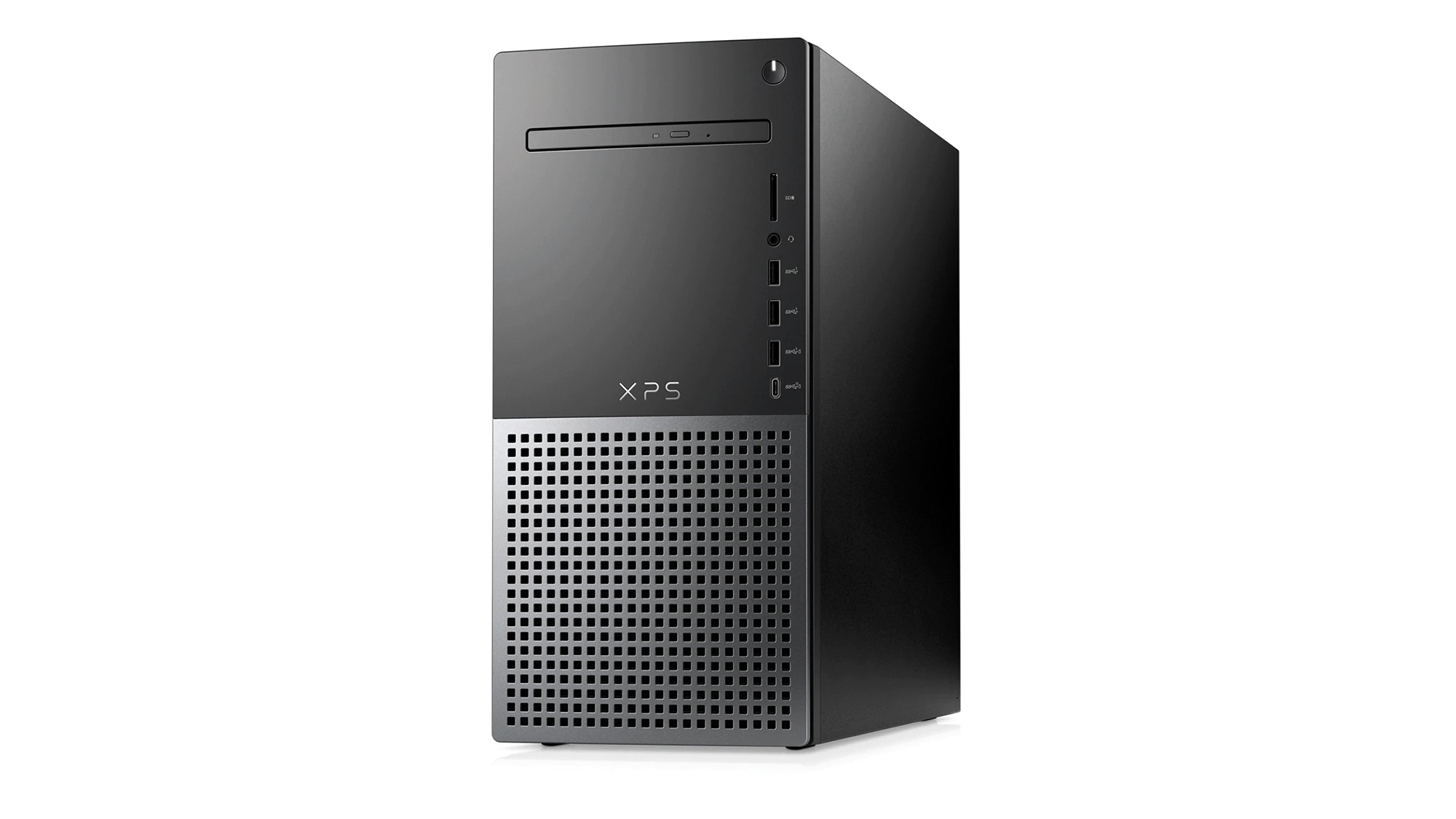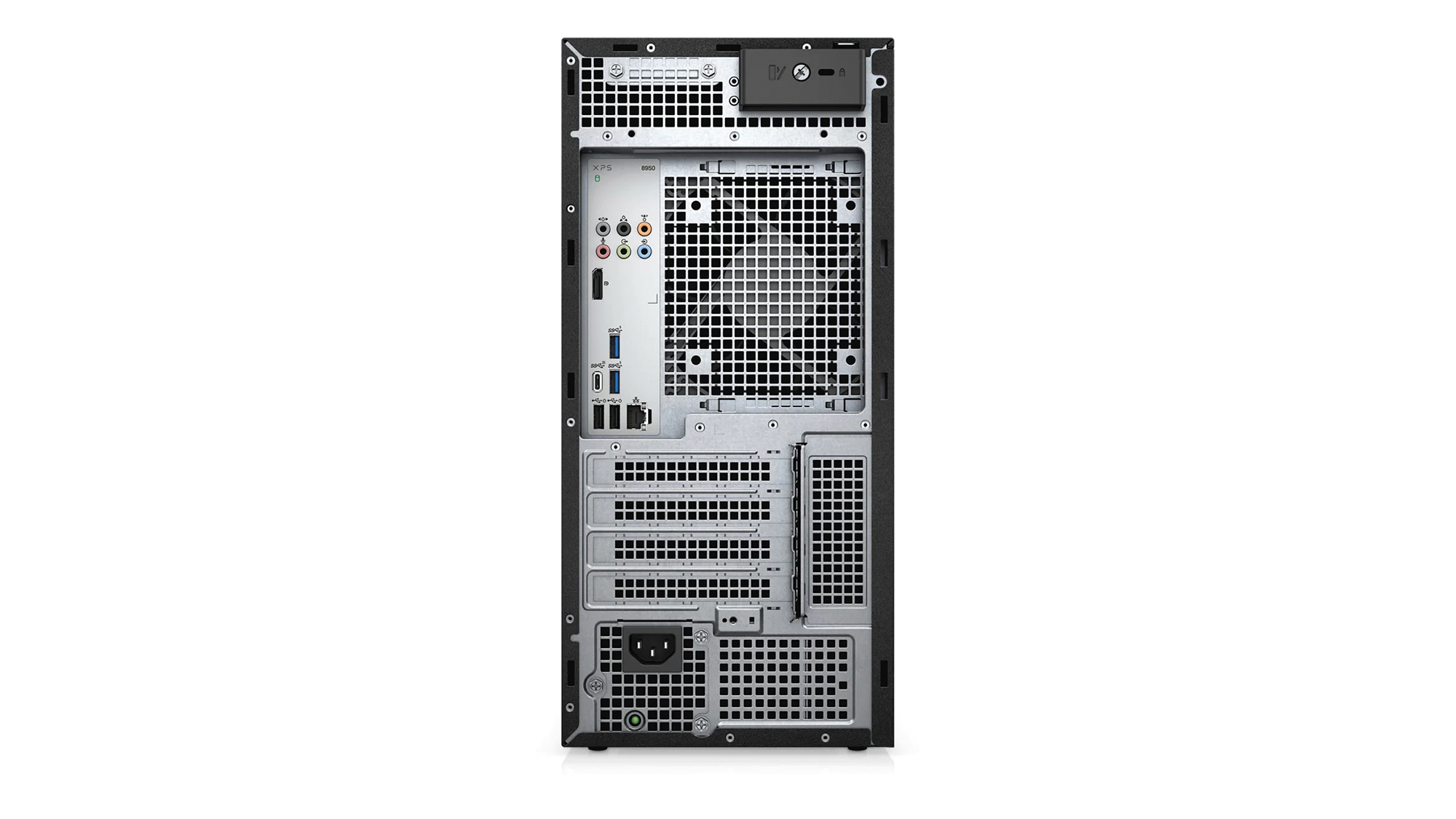Dell XPS Desktop 8950 review: Commendable, but uninspiring
A good-value PC based on Intel’s latest silicon and DDR5 memory, but there’s nothing here to excite


-
+
Excellent value
-
+
Superb 12th-gen performance
-
+
Highly expandable
-
+
Speedy SSD
-
-
Aging GPU

Dell earned its reputation for building its PCs to order with a “just in time” philosophy, but as time goes on it seems to be edging towards a pile-’em-high approach; we ordered this PC ourselves, and were hoping to customise the memory and SSD using its online configurator. But no such luck. We had to lump the preset options or pay another £500 for a Core i7 version with the 16GB of RAM and 512GB SSD that we wanted. So, would we lump it and like it?
There’s certainly much to admire. The XPS Desktop 8950 (simply called New XPS Desktop on Dell’s UK website) is based on Intel’s excellent 12th gen Core processors - the Core i5-12600K, in our case - and we were pleased to see DDR5 RAM. Just one 8GB stick, mind, so to take advantage of a dual-channel memory setup you’ll need to buy a second 8GB stick of DDR5 RAM yourself. These cost around £65, and three empty DIMM sockets lie in wait.
Having only 8GB of RAM didn’t hamper the Dell in our benchmark tests, where it managed to sail to an overall score of 395, just sneaking past the Wired2Fire Ultima WS Home Office PC and its Ryzen 7 chip, and firmly blowing the Acer Aspire XC-1660’s score of 175 out of the water.
This is the advantage of Intel’s new architecture model, and the CPU’s six P-cores and four E-cores give a total of 16 threads to split complex workloads across. The multicore sections of the Geekbench 5 and Cinebench R23 tests reveal a slight achilles heel - where systems based on the Ryzen 7 5700G and its eight powerful cores have an advantage - but it’s still more than enough to handle even strenuous multi-threaded applications.
Dell uses its own motherboard designs, and we were surprised to see Intel’s top-end Z690 chipset in place. This supports overclocking, unlike the more common B660 chipset, and while the CPU is covered by a huge heatsink, we can’t imagine it will allow much leeway. Especially when there’s no fan attached to it, with cold air sucked in from a front-mounted fan and fed out through the rear.
We expected the fans to fall to almost nothing when idle, where the XPS consumes a friendly 30W, but they kept going at a steady rate no matter whether the PC was running a game or doing nothing at all. This meant there was always a low hum, which was only irritating because we knew it wasn’t necessary most of the time.

The Z690 chipset also allows for higher-spec USB ports, so quite why Dell only provides two USB-A 2 and five USB 3.2 Gen 1 ports – three on the front, two at the rear – is a mystery. Likewise the USB-C port at the front is stuck at USB 3.2 Gen 2 (10Mbits/sec) rather than Gen 2x2 (20Mbits/sec). The one saving grace is the second USB-C port at the back, which takes advantage of the faster specification.
Some good news: both M.2 slots on the motherboard support PCIe 4, and you have the choice of shorter 2230 drives or the longer 2280 form factor. Choose the latter and you can have upto 4TB of super-fast storage on tap. Our humble 256GB drive was still extremely quick, though, racking up sequential read and write speeds of 2,998MB/sec and 1,849MB/sec respectively in the AS SSD benchmark.
There’s also space for two 3.5in hard disks, tucked away in caddies at the top of the case. Unusually, Dell provides two more storage options: an SD card slot at the front of the case, plus a slimline DVD writer. Both could come in handy, although the DVD drive maybe less so.
There’s one component we’re yet to mention, and that’s the graphics card. This most basic specification of the XPS Desktop 8950 includes an aged GeForce GTX 1650 Super card. It lacks support for ray tracing and DLSS but remains a force to be reckoned with – even at 1440p, where it managed 49fps in Shadow of the Tomb Raider at High settings and 57fps in Hitman 2 with detail and quality set to high (but super sampling at 1x).
If you want more gaming power then your budget will have to rise by at least 50%, because the £1,449 Core i7/16GB/512GB machine we alluded to earlier also includes RTX 3060 graphics, as well as a 1TB hard disk to store those games. That’s a decent specification for the money, but when you’re spending that much it’s hard to ignore how dull the XPS Desktop’s design is. The black plastic fascia and ugly steel innards take us back to PCs from the early 2000s, when we were just glad to escape beige.
So, do we like the XPS Desktop 8950? Yes: for less than a grand, it’s a fine way to buy a system based on the latest Intel technology, and we can’t fault any of the components. It’s easy to upgrade, too. But do we love the XPS Desktop 8950? That’s an emotion too far.
Dell XPS Desktop 8950 specifications
| Processor | Intel Core i5-12600K 2.8GHz/4.9GHz |
| RAM | 8GB Dell 4,400MHz DDR5 |
| Graphics adapter | Nvidia GeForce GTX 1650 Super |
| Storage | 256GB SSSTC CL4 Series M.2 NVMe PCI-E 4 drive |
| Storage expansion | 1x M.2, 2x 3.5in |
| Graphics outputs | DisplayPort, DVI-D, HDMI |
| Other ports | 2 x USB 2, 2 x USB-A 3.2 Gen 1, 1x USB-C 3.2 Gen 2x2, 2.5Gb Ethernet |
| Wi-Fi | Wi-Fi 6 |
| Bluetooth | Bluetooth 5.2 |
| Dimensions, mm (WDH) | 173 x 427 x 373mm |
| Weight (kg) | 7.4kg |
| Operating system | Windows 11 Home |
Get the ITPro daily newsletter
Sign up today and you will receive a free copy of our Future Focus 2025 report - the leading guidance on AI, cybersecurity and other IT challenges as per 700+ senior executives
Tim Danton is editor-in-chief of PC Pro, the UK's biggest selling IT monthly magazine. He specialises in reviews of laptops, desktop PCs and monitors, and is also author of a book called The Computers That Made Britain.
You can contact Tim directly at editor@pcpro.co.uk.
-
 ‘Phishing kits are a force multiplier': Cheap cyber crime kits can be bought on the dark web for less than $25 – and experts warn it’s lowering the barrier of entry for amateur hackers
‘Phishing kits are a force multiplier': Cheap cyber crime kits can be bought on the dark web for less than $25 – and experts warn it’s lowering the barrier of entry for amateur hackersNews Research from NordVPN shows phishing kits are now widely available on the dark web and via messaging apps like Telegram, and are often selling for less than $25.
By Emma Woollacott Published
-
 Redis unveils new tools for developers working on AI applications
Redis unveils new tools for developers working on AI applicationsNews Redis has announced new tools aimed at making it easier for AI developers to build applications and optimize large language model (LLM) outputs.
By Ross Kelly Published
-
 Google layoffs continue with "hundreds" cut from Chrome, Android, and Pixel teams
Google layoffs continue with "hundreds" cut from Chrome, Android, and Pixel teamsNews The tech giant's efficiency drive enters a third year with devices teams the latest target
By Bobby Hellard Published